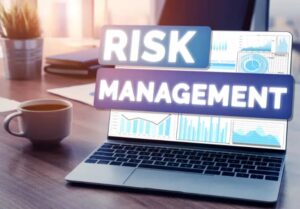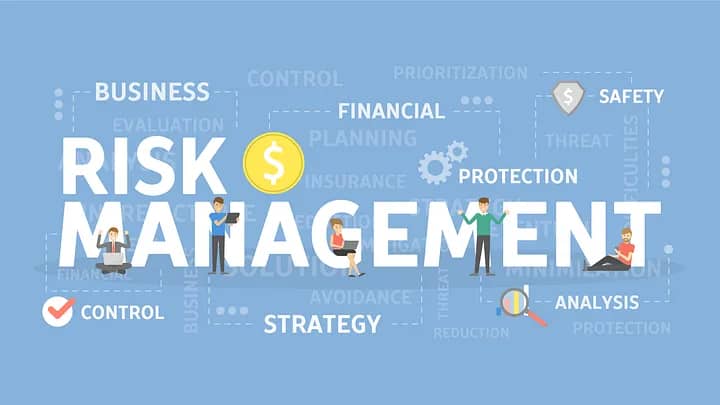Risk management is no longer just a box to check off on your to-do list; it’s a necessity in a fast paced world of business and finance. Leaders must arm themselves with the knowledge to navigate uncertainty effectively. It doesn’t matter if you’re steering a Fortune 500 company or leading a small startup, understanding the fundamentals of risk management can be the difference between success and failure.
This guide will explore 7 essential principles of risk management that every leader should know. These principles will not only help you identify and mitigate risks but also empower you to turn potential threats into opportunities. So, grab your favorite beverage, sit back, and let’s dive into the world of risk management!

Why Risk Management Matters
Before we delve into the principles, let’s establish why risk management is crucial for leaders.
- Protects Assets: Effective risk management safeguards your company’s resources, including financial, human, and intellectual assets.
- Enhances Decision-Making: Understanding potential risks allows leaders to make informed decisions that can steer their organizations toward success.
- Fosters a Culture of Safety: By prioritizing risk management, you create an environment where employees feel safe and valued.
As Peter Drucker famously said, “The greatest danger in times of turbulence is not the turbulence; it is to act with yesterday’s logic.” Let’s not fall into that trap!
Principle 1: Identify Risks
Understanding What Could Go Wrong
The first principle of risk management is identifying potential risks. This might sound like a no-brainer, but you’d be surprised how many organizations overlook this crucial step.
Types of Risks to Consider:
- Financial Risks: Market fluctuations, credit risks, and liquidity issues.
- Operational Risks: Supply chain disruptions, technology failures, and human errors.
- Reputational Risks: Negative publicity, product failures, and social media backlash.
According to a survey by the Risk Management Society, **70% of organizations** reported that they do not adequately identify risks before they occur.
“Ignoring risks is like ignoring a fire alarm. You may enjoy the peace and quiet, but eventually, you’ll regret it when the flames catch up to you!”
Principle 2: Assess Risks
Once you’ve identified risks, the next step is to assess their potential impact on your organization. This involves analyzing both the likelihood of the risk occurring and its consequences.
- Risk Matrix: Create a simple risk matrix to categorize risks based on their severity and likelihood. This visual tool can help you prioritize which risks require immediate attention.
- Quantitative vs. Qualitative Assessment: Use quantitative methods for measurable risks (like financial losses) and qualitative assessments for less tangible risks (like reputational damage).
“Risk assessment is not just about numbers; it’s about understanding the story behind the numbers.” — Unknown.
Principle 3: Develop a Risk Management Plan
Now that you’ve identified and assessed your risks, it’s time to develop a risk management plan. This plan should outline how you will respond to each identified risk.
- Mitigation Strategies: Decide on actions to reduce the likelihood of risks occurring. For instance, if a technology failure is a risk, invest in better IT infrastructure.
- Contingency Plans: Outline what to do if a risk becomes a reality. This includes communication strategies and resource allocation.
- Assign Responsibilities: Designate team members to oversee specific risks and ensure accountability.
A study by McKinsey found that organizations with structured risk management plans are **30% more likely** to achieve their strategic objectives.
“Failing to prepare is preparing to fail.” — John Wooden. So, don’t be that person!
Principle 4: Monitor and Review
The world is ever-changing, and so are the risks that your organization faces. Regularly monitoring and reviewing your risk management plan is essential.
- Set Regular Review Dates: Schedule quarterly or biannual assessments to revisit your risk landscape and adjust your strategies accordingly.
- Use Key Performance Indicators (KPIs): Establish KPIs to measure the effectiveness of your risk management efforts.
“What gets measured gets managed.” — Peter Drucker.
By staying vigilant, you can adapt to new risks before they become significant issues.
Principle 5: Build a Risk-Aware Culture
Creating a culture that prioritizes risk awareness can enhance your organization’s resilience.
- Training Programs: Implement regular training sessions for employees on risk management practices. Knowledge is power!
- Encourage Open Communication: Create channels for employees to report risks or concerns without fear of retribution. A culture of transparency promotes proactive risk management.
- Lead by Example: As a leader, demonstrate your commitment to risk management by discussing it openly and integrating it into decision-making processes.
Statistics say, Companies with a strong risk culture are 50% less likely to experience significant operational failures.
“Culture eats strategy for breakfast.” — Peter Drucker. So, feed your organization a healthy diet of risk awareness!
Principle 6: Utilize Technology
In 2025, leveraging technology in risk management has never been more critical.
- Risk Management Software: Use specialized tools to track, manage, and analyze risks. These tools can automate many aspects of the risk management process.
- Data Analytics: Utilize big data to gain insights into potential risks and trends. Data-driven decisions are often more reliable.
“Using technology for risk management is like having a personal trainer for your financial health. You wouldn’t skip the gym, so don’t skip the tech!”
Principle 7: Stay Compliant
Compliance with laws and regulations is a vital aspect of risk management. Failing to comply can lead to hefty fines and damage to your reputation.
- Understand Regulatory Requirements**: Keep abreast of industry regulations that may affect your business operations.
- Regular Audits: Conduct compliance audits to ensure that your organization is adhering to all necessary regulations.
- Consult Legal Experts: When in doubt, consult with legal professionals to understand your compliance obligations.
According to a report by Deloitte, companies that prioritize compliance experience 25% fewer legal issues.
“The price of freedom is eternal vigilance.” — Thomas Jefferson. Stay vigilant, and you’ll stay compliant!
—
FAQs
Q1. What is risk management?
A: Risk management involves identifying, assessing, and prioritizing risks to minimize their impact on an organization.
Q2. Why is risk assessment important?
A: It helps organizations understand potential threats and develop strategies to mitigate them, enhancing decision-making.
Q3. How often should I review my risk management plan?
A: Regular reviews should occur at least quarterly or whenever significant changes in the business environment happen.
Q4. What are some common risks businesses face?
A: Common risks include financial, operational, reputational, and regulatory risks.
Q5. How can I foster a risk-aware culture in my organization?
A: Implement training programs, encourage open communication, and lead by example to promote risk awareness.
—
Understanding and applying these principles of risk management can significantly enhance your leadership effectiveness and help your organization navigate the complexities of today’s business environment. Remember, risk management is not just a checkbox; it’s a continuous journey that requires vigilance, adaptability, and a commitment to fostering a strong risk culture.
So, take these principles to heart, and empower your team to embrace risk management as a core part of your organization’s strategy. After all, as the saying goes, “In the middle of difficulty lies opportunity.” Embrace the complexities, and turn risks into rewards!









buying cialis online: tadalafil 5mg once a day – cialis price cvs
cialis none prescription Tadal Access tadalafil citrate powder
cialis medicare tadalafil cheapest online or tadalafil liquid fda approval date
https://clients1.google.com.na/url?q=https://tadalaccess.com cialis free trial canada
how many mg of cialis should i take tadalafil 20 mg directions and cialis dosis cialis sublingual
natural alternative to cialis cialis is for daily use or cheap cialis online overnight shipping
http://srea.jp/?tadalaccess.com cialis trial
cialis purchase canada mambo 36 tadalafil 20 mg reviews and how long for cialis to take effect generic cialis
https://tadalaccess.com/# cialis and cocaine
pictures of cialis pills: walmart cialis price – taking cialis
cialis 100mg review Tadal Access cialis time
cialis free trial canada: tadalafil pulmonary hypertension – cialis difficulty ejaculating
https://tadalaccess.com/# best price on generic cialis
buy generic cialis online Tadal Access tadalafil (megalis-macleods) reviews
cialis dosage 20mg: buying cialis – cialis before and after
when will cialis be over the counter teva generic cialis or cialis professional ingredients
https://maps.google.com.mx/url?sa=t&url=https://tadalaccess.com cialis brand no prescription 365
prescription for cialis cialis headache and cialis recreational use cialis 10 mg
mint pharmaceuticals tadalafil Tadal Access cialis for daily use dosage
https://tadalaccess.com/# how long does it take for cialis to start working
cialis online no prior prescription cialis dosage 40 mg or cialis high blood pressure
http://balinter.net/redirect/banner.php?redir=tadalaccess.com what is cialis tadalafil used for
cialis reviews photos cialis stories and cialis manufacturer coupon 2018 buy cialis in toronto
cialis 800 black canada: Tadal Access – cialis tadalafil cheapest online
https://tadalaccess.com/# cialis 5mg price cvs
tadalafil generic usa: Tadal Access – cheapest cialis
generic cialis 20 mg from india cialis online with no prescription or take cialis the correct way
http://www.kyuuyo-pit.com/feed2js/feed2js.php?src=http://tadalaccess.com how to buy tadalafil
canadian cialis how to buy tadalafil online and letairis and tadalafil over the counter cialis walgreens
tadalafil dose for erectile dysfunction TadalAccess no prescription cialis
does medicare cover cialis for bph: cialis and blood pressure – special sales on cialis
https://tadalaccess.com/# max dosage of cialis
cialis 5 mg sanofi cialis or cialis generic cost
http://sharjahcityguide.com/main/advertise.asp?oldurl=http://tadalaccess.com how much tadalafil to take
cialis professional cialis generic name and cialis walgreens cialis copay card
cialis canada over the counter Tadal Access best research tadalafil 2017
cialis brand no prescription 365: Tadal Access – canadian cialis no prescription
tadalafil generic headache nausea taking cialis or cialis side effects a wife’s perspective
https://www.243ok.com/index.php?a=free_page/goto_mobile&referer=https://tadalaccess.com cialis trial pack
canadian online pharmacy no prescription cialis dapoxetine cialis 10 mg and buying generic cialis online safe cialis canada free sample
https://tadalaccess.com/# buy tadalafil cheap
cialis 100mg review TadalAccess cialis online without a prescription
does cialis lowers blood pressure: cialis voucher – average dose of tadalafil
Buy medicine online Australia Medications online Australia online pharmacy australia
Ero Pharm Fast: Ero Pharm Fast – Ero Pharm Fast
cheapest antibiotics: Biot Pharm – best online doctor for antibiotics
Ero Pharm Fast: Ero Pharm Fast – Ero Pharm Fast
Licensed online pharmacy AU: Pharm Au24 – Pharm Au24
Ero Pharm Fast Ero Pharm Fast cheap ed pills
https://biotpharm.com/# get antibiotics without seeing a doctor
Over the counter antibiotics pills: buy antibiotics online uk – cheapest antibiotics
Licensed online pharmacy AU: Buy medicine online Australia – Online medication store Australia
Online drugstore Australia: pharmacy online australia – PharmAu24
online pharmacy australia online pharmacy australia PharmAu24
buy ed medication online: erectile dysfunction online – Ero Pharm Fast
https://biotpharm.com/# best online doctor for antibiotics
Ero Pharm Fast: Ero Pharm Fast – edmeds
Online drugstore Australia Online drugstore Australia or pharmacy online australia
https://www.google.ml/url?sa=t&url=http://pharmau24.shop Online medication store Australia
Online medication store Australia pharmacy online australia and online pharmacy australia PharmAu24
http://eropharmfast.com/# Ero Pharm Fast
Ero Pharm Fast: online erectile dysfunction pills – edmeds
buy antibiotics for uti best online doctor for antibiotics or over the counter antibiotics
http://www.yakubi-berlin.de/url?q=https://biotpharm.com buy antibiotics from india
Over the counter antibiotics for infection buy antibiotics from india and buy antibiotics best online doctor for antibiotics
buy antibiotics online: buy antibiotics online uk – buy antibiotics online
pharmacy online australia: Licensed online pharmacy AU – Online medication store Australia
get antibiotics quickly Biot Pharm Over the counter antibiotics for infection
online pharmacy australia: Online drugstore Australia – Discount pharmacy Australia
https://pharmau24.com/# Online drugstore Australia
п»їed pills online cheap ed treatment or where can i buy erectile dysfunction pills
http://webmail.cdlbh.com.br/redir.php?http://eropharmfast.com/ buy erectile dysfunction treatment
buy ed medication online buying erectile dysfunction pills online and low cost ed pills buy ed meds
PharmAu24 PharmAu24 or Pharm Au24
https://www.google.tg/url?q=https://pharmau24.shop Medications online Australia
Discount pharmacy Australia Medications online Australia and Online medication store Australia online pharmacy australia
Over the counter antibiotics for infection: BiotPharm – best online doctor for antibiotics
pharmacy online australia: Licensed online pharmacy AU – Online medication store Australia
Pharm Au24 Licensed online pharmacy AU Medications online Australia
buy antibiotics from canada Over the counter antibiotics for infection or Over the counter antibiotics for infection
https://www.google.cv/url?q=https://biotpharm.com buy antibiotics over the counter
over the counter antibiotics antibiotic without presription and best online doctor for antibiotics get antibiotics quickly
Over the counter antibiotics for infection: Biot Pharm – best online doctor for antibiotics
Ero Pharm Fast: ed meds online – Ero Pharm Fast
https://pharmau24.shop/# online pharmacy australia
over the counter antibiotics buy antibiotics online uk cheapest antibiotics
buy antibiotics for uti buy antibiotics from india or buy antibiotics online
https://cse.google.md/url?sa=t&url=https://biotpharm.com antibiotic without presription
get antibiotics quickly over the counter antibiotics and Over the counter antibiotics pills antibiotic without presription
4mk17w
s38hi2
uebo6y
dugill